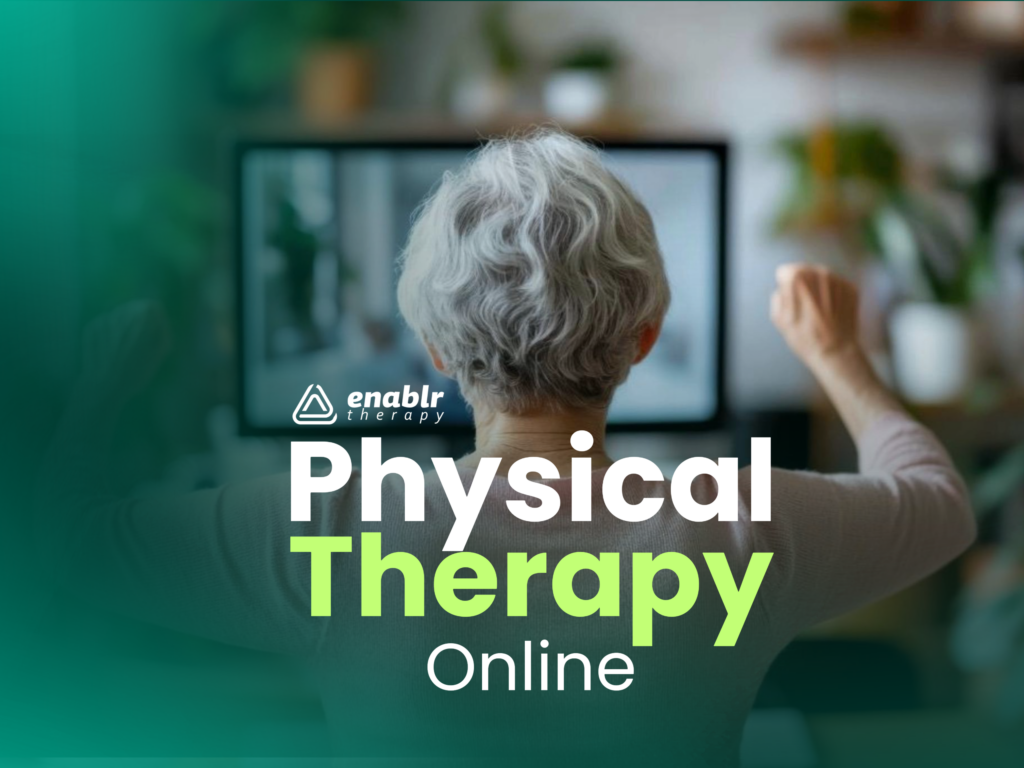The field of physical therapy (PT) has long been associated with hands-on techniques and in-clinic visits, but advancements in technology are transforming the way care is delivered. Online physical therapy is emerging as a powerful tool to bridge gaps in access, enhance client outcomes, and modernize the delivery of care. This approach combines the expertise of movement specialists with the convenience and accessibility of virtual platforms, offering a host of benefits for clients and providers alike.
Approach For Online Physical Therapy
Physical therapists are movement experts, trained to assess and treat a wide variety of musculoskeletal and functional impairments. Although physical therapists are often known to use manual therapies that are done in clinic settings, they are able to adapt their treatment focus in teletherapy to address the client’s need through education, self-treatment strategies, and use of tools and resources that the client can access in their own environment. For example, a physical therapist may teach a client to perform self-mobilitation techniques such as using foam rollers, massage balls or other tools. They will work with the client to set up home exercise programs to optimize mobility and strength results while reducing the risk of injury.
Additionally, teletherapy sessions allow therapists to educate clients on proper posture, ergonomics, and daily movement strategies tailored to their unique needs and environment. By empowering clients with knowledge and practical tools, telehealth PT allows clients to take control of their health for long-term self management and become independent.
The Shift in Pain Science
The field of pain management is undergoing a paradigm shift. Traditional manual modalities, such as passive treatments like ultrasound, hot/cold treatments, and traction, are being reevaluated in favor of active approaches centered around movement and client engagement. Research increasingly supports the idea that movement plays a critical role in managing and reducing pain by improving circulation, enhancing mobility, and addressing underlying functional limitations. Telehealth PT aligns seamlessly with this evolution, enabling therapists to focus on active interventions, movement-based therapies, and pain education from the comfort of a client’s home.
Convenience and Accessibility
One of the most significant advantages of telehealth PT is its unparalleled convenience. Clients no longer need to take time off work, arrange childcare, or commute to a clinic. This ease of access is particularly valuable for individuals living in rural or underserved areas, where healthcare services may be limited. Teletherapy removes geographic barriers, connecting clients with skilled therapists regardless of location. For those with mobility challenges or transportation issues, this virtual model ensures that essential care is accessible without added stress or logistical hurdles.
Real-Time Observation and Problem-Solving
Telehealth PT offers a unique advantage by allowing therapists to observe clients in their natural environments. This real-time access provides valuable insights into the functional challenges clients face at home, school, or work. For example, a therapist can assess how a client navigates in their own kitchen, classroom, or office, or how they perform household, school, or work-related tasks. These observations enable therapists to problem-solve collaboratively with the client or other support personnel, offering tailored solutions to improve safety and efficiency in daily activities. This personalized approach not only enhances the therapeutic experience but also ensures that interventions are directly applicable to the client’s real-world needs.
Evidence Supporting Telehealth PT
The effectiveness of telehealth physical therapy is supported by research. Studies have demonstrated that teletherapy can achieve comparable outcomes to in-person care for various conditions including chronic pain and post-surgical monitoring and rehabilitation. Clients report high levels of satisfaction with telehealth services, citing improved accessibility and convenience as key benefits. Additionally, telehealth reduces healthcare costs by minimizing travel expenses and maximizing the efficiency of care delivery and helps to address the healthcare shortage seen in some settings such as school based services. As evidence continues to grow, telehealth PT is solidifying its role as a viable and effective option for physical therapy services.
Conclusion
Telehealth is revolutionizing the way physical therapists deliver care, offering a blend of expertise, convenience, and innovation. By providing tailored exercise programs, client education, and active pain management strategies, PTs are empowering clients to take control of their health. The accessibility and flexibility of teletherapy make it an invaluable tool for reaching underserved populations and addressing functional challenges in real-time. With research backing its efficacy, telehealth PT is poised to become a cornerstone of modern rehabilitation, ensuring that quality care is available anytime, anywhere.

Enablr Therapy believes that partnership with families and school partners is essential to successful therapy outcomes. Contact us for more information.


